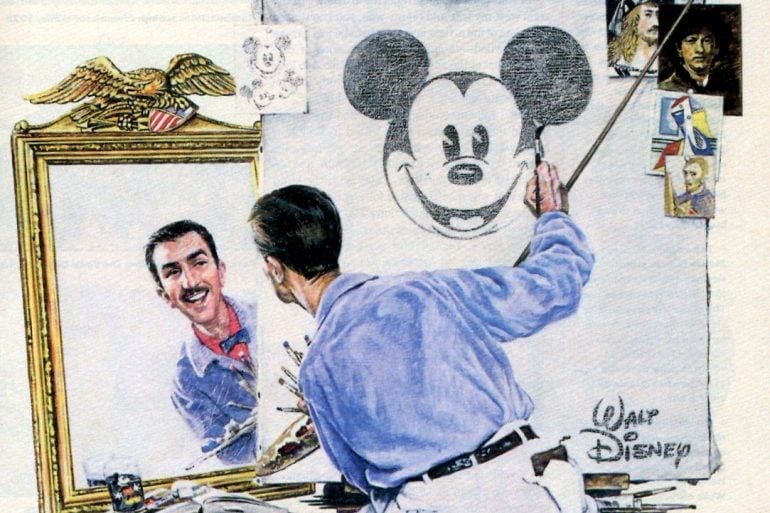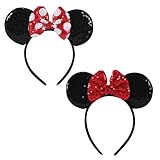Mickey Mouse history: From train sketch to Hollywood icon

In 1988, Life magazine published a full-length tribute to Mickey and Walt Disney, tying their stories together as the mouse reached his 60th birthday. The article made it clear that Mickey wasn’t created by accident.
After losing the rights to his earlier character Oswald the Lucky Rabbit, Walt Disney needed a new idea, and started sketching. With help from animator Ub Iwerks, that idea turned into a mouse named Mortimer — soon renamed Mickey — and the first short films were rushed into production.
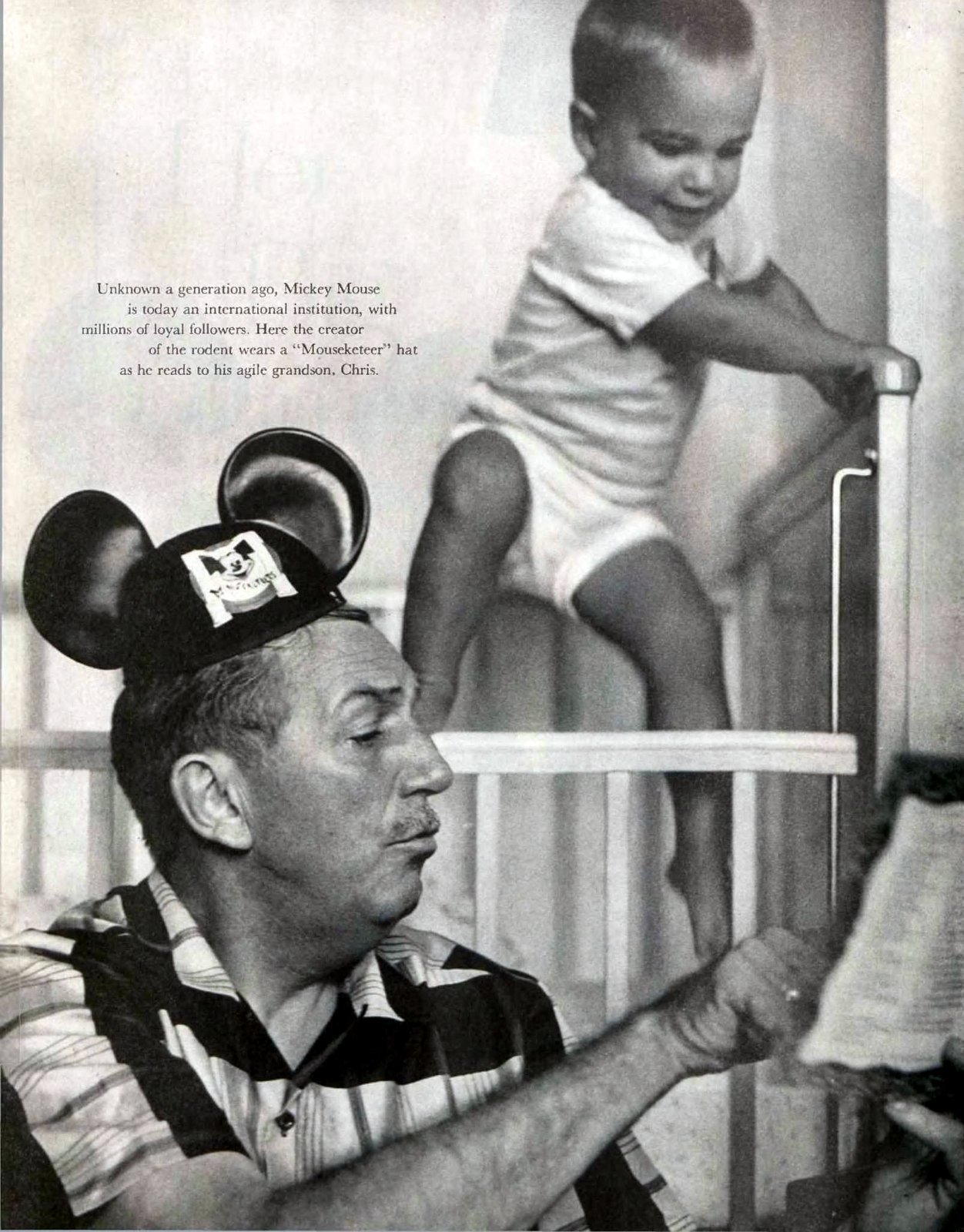
The first one with sound, Steamboat Willie, came out in 1928, and it changed everything. Mickey’s early look was simple by design, because animation had to move fast.
Circles, pipe stem legs, a pair of gloves and shoes too big for his feet gave him a look that was easy to animate and easy to recognize. That worked in his favor, and over time, Mickey became a household name. He showed up in theaters, on watches, in parades and on toy shelves, all within a few years.

In particular, the 1930s were important years for the little rodent, establishing him as a beloved cartoon character for the ages. He was seemingly everywhere — from magazines to movie theaters — and could even be seen alongside matinee idols and on paper masks (which were popular freebies from Ward’s store).
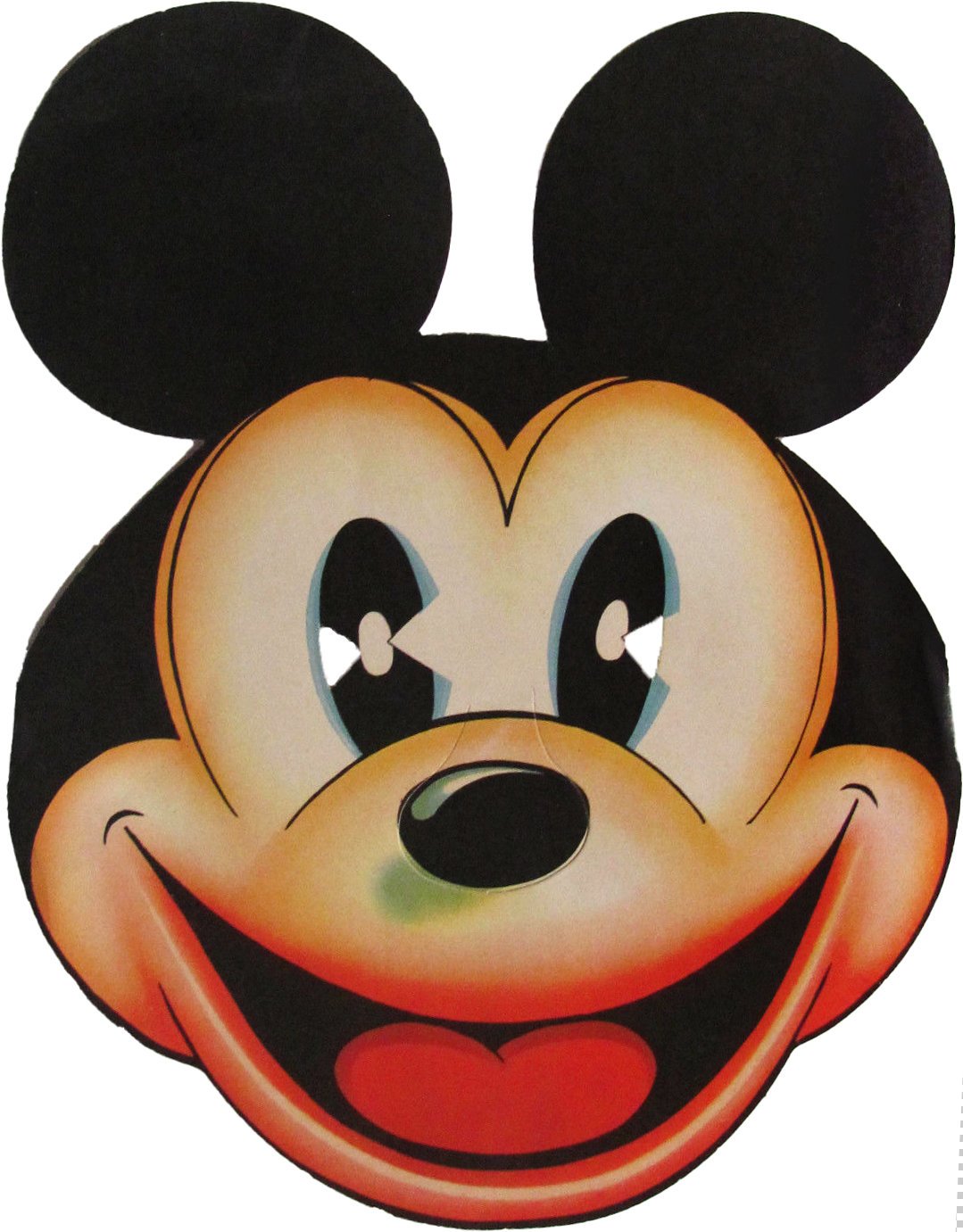
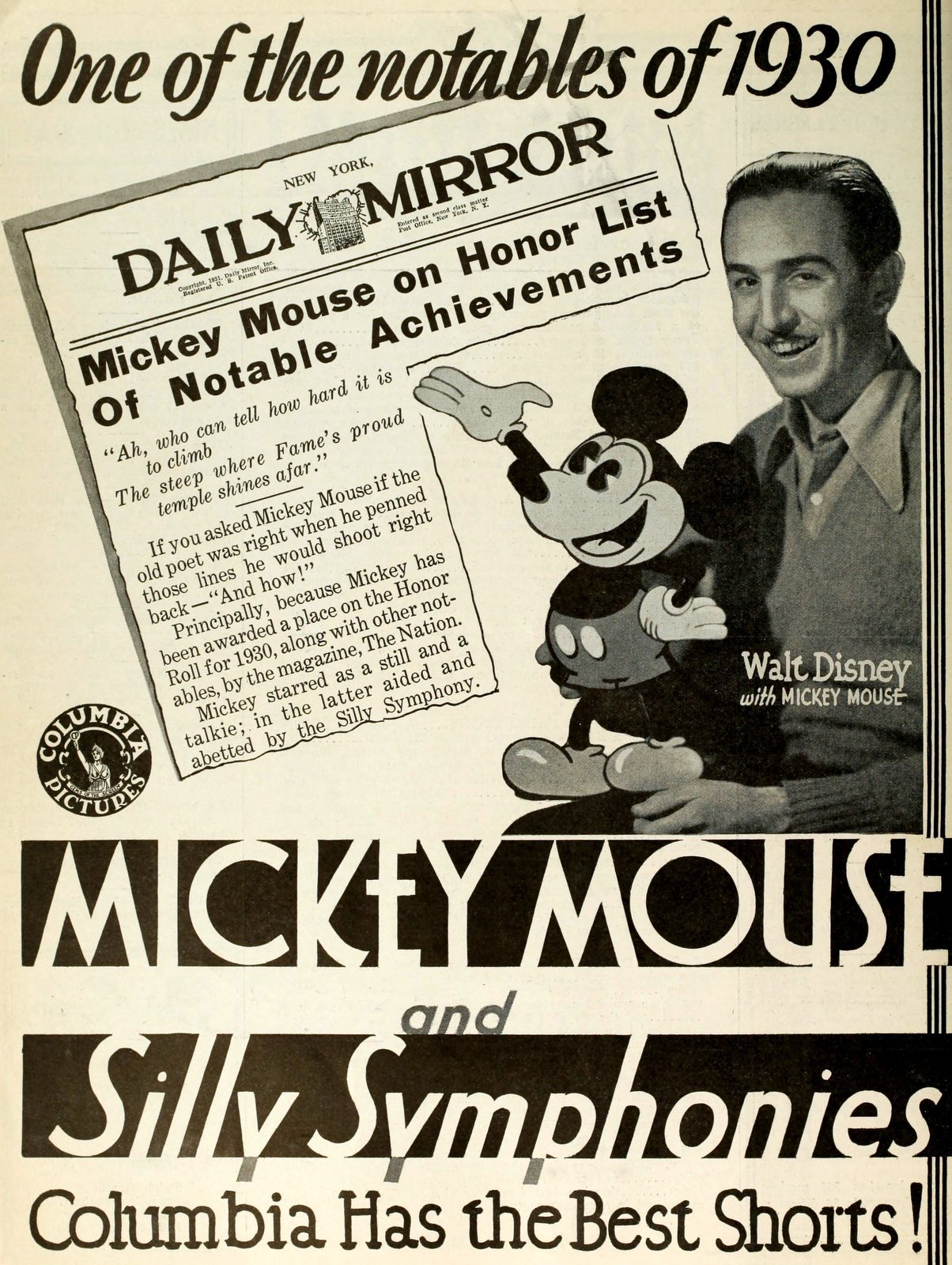

Even during the years when he stopped appearing in regular cartoons, Mickey stayed visible. He showed up on D-Day as a password. His face turned up on lunchboxes, school supplies and billboards around the world. Walt focused more on live-action films and theme parks, but Mickey was still the front man.
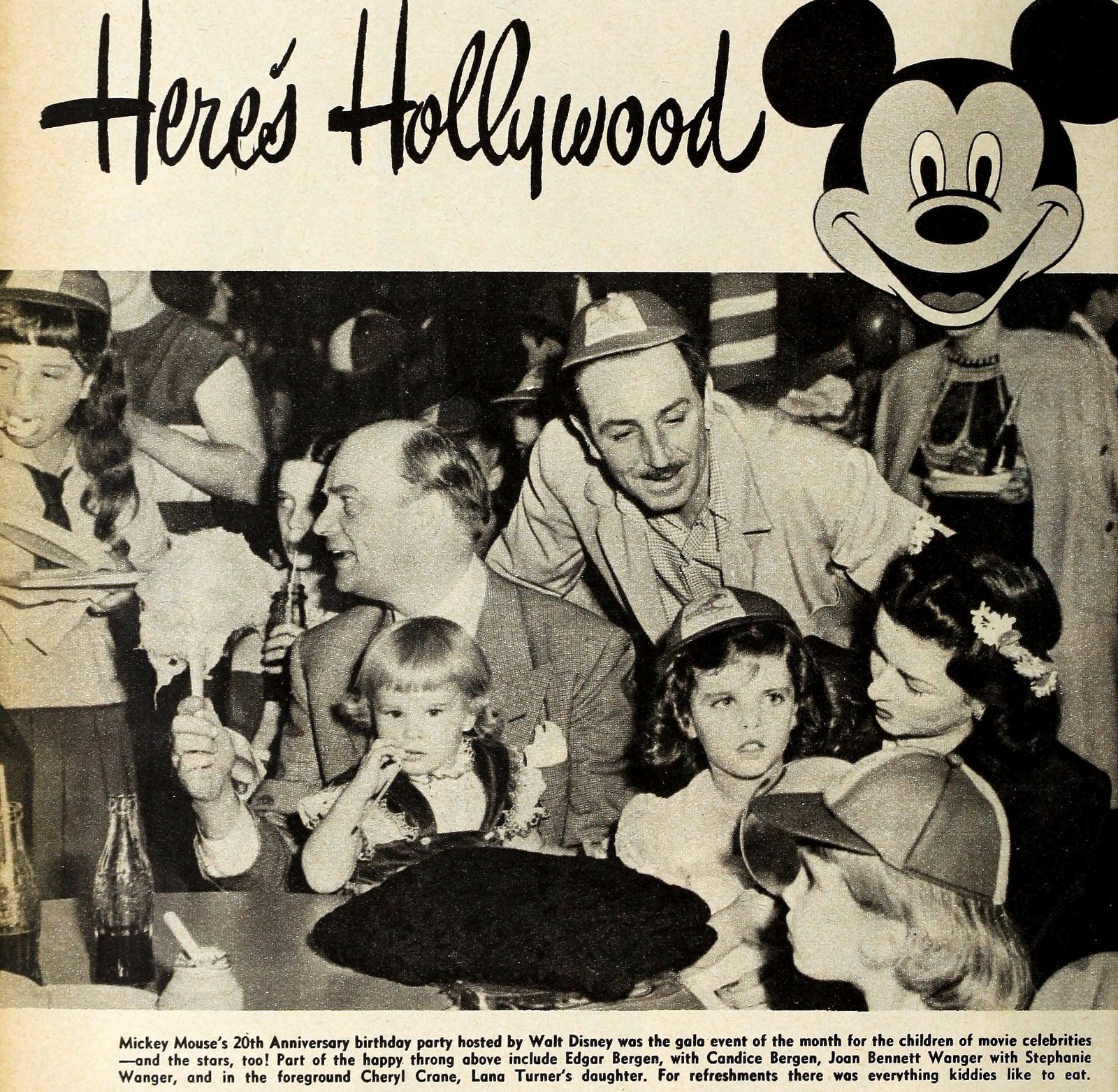
By the 1980s, he was ready for a proper return to animation, and Life caught that moment in time, taking stock of how far the mouse had come.
We’ve collected that full article below, along with various related illustrations. The 1988 feature offers a snapshot of Mickey Mouse history told by the people who knew Walt and worked at his side. It’s a look back at how a cartoon character from the silent era kept going strong for sixty years — and why he still matters.
Mickey and his alter ego (1988)
A man gave birth to a mouse. The mouse built the man an empire. A true-life fable, as recounted by Disney’s official biographer.
By Bob Thomas – LIFE magazine advertising supplement (November 1988)
“Whenever I see Mickey Mouse have to cry. Because he reminds me so much of Walt.” – Lillian Disney, Walt Disney’s widow
“Mickey was Walt, and Walt was Mickey.” – Frank Thomas, veteran Disney animator

Hail to thee, Mickey Mouse. (1988)
Spreader of pure, uncomplicated joy. Emblem on millions of products, both useful and expendable. Password for officers and men on D-Day 1944. Favorite of Mary Pickford, Franklin D Roosevelt and Benito Mussolini.
Anathema to Adolf Hitler, whose propagandists called Mickey “the most miserable ideal ever revealed.” Inspiration for a compound adjective (“This is a real Mickey Mouse operation”). Veteran of more comebacks than Billy Martin.
Yet, strangely absent from the screen for most of the last 35 years. Except for his appearance in the 1983 featurette Mickey’s Christmas Carol, Mickey has not enjoyed regular film employment since his last short, The Simple Things, in 1953.

Mickey has, in fact, been on the shelf for a good, long time, victim of his famous creator’s obsession for live-action films and with building a theme park in the orange groves of Anaheim. For the past three decades, Mickey has been at once the most recognizable image in the world and — though he continued as a greeter at theme parks — an actor out of work.
But on the eve of his 60th birthday, the Mouse — whose fortunes have always uncannily reflected the fortunes of both his master, Walt, and the Disney organization — is making a spectacular comeback.
Following Mickey’s cameo appearance with Tom Selleck on this year’s Academy Awards, Disney is now building him a studio at Walt Disney World, where animators will begin creating brand-new 22-minute featurettes after the turn of the year. What better opportunity to celebrate the most conspicuous asset of a 93-billion corporation — and the genius who made him what he is today.

Mickey made his debut in Steamboat Willie at the Colony Theater in New York on November 18, 1928. Like the Mona Lisa, Coca-Cola and other international icons, the origin of Mickey Mouse is befogged in legend. Walt had his own story, and he told it over and over, sometimes with improvements.
In March 1928, Walt and his wife, Lillian, were traveling across the country after a New York double cross. Not only had his distributor stolen his star, Oswald the Lucky Rabbit, but most of the studio’s animators had been lured away by competitors figuring to steal some of Disney’s magic.
As Walt told a London reporter in 1935: “In the train west my wife and I — my wife, you know, used to be one of my artists in our first studio in a garage in Hollywood — thought up a new series of cartoons. Most of the animals that people liked to look at on the screen had been grabbed already for pictures — cats and dogs, and my own rabbit.

“But I remembered a mouse I used to know in my old office in Kansas City. I used to sketch at night when I was working late at my desk. We worked out a rough scenario in the train, and we called the mouse Mortimer. Later he turned into Mickey. It was a better name for a good, common mouse with no class distinctions.”
About the authenticity of the train story, Walt’s nephew Roy E Disney (now vice chairman of the board) remarks: “It has been told so many times that you don’t know what’s true. The name part I’m sure of. I often heard my father and Walt say, ‘Thank God, we didn’t name him Mortimer!'”
Personality plus form and movement
How ever Mickey Mouse was born, was Walt who provided his personality, and Ub Iwerks who contributed the form and movement. Iwerks was a dour Dutchman who had been Walt’s partner in Kansas City; the cartoon firm was called Iwerks-Disney because Disney-Iwerks sounded too much like an optical company.
After Walt and his brother Roy established their Hollywood studio in 1923, they sent for Iwerks, who became the spark plug for the cartoon.
He created the first Mickey Mouse cartoon, Plane Crazy, at a furious rate: 700 drawings a day. After Gallopin’ Gaucho, Walt decided to convert his cartoons to the newfangled talkies, and Steamboat Willie, the first fully synchronized sound cartoon, was born.

For all of his charm, Mickey Mouse was also largely a creature of necessity. As Walt told me in 1957: “He had to be simple. We had to push out 700 feet of film every two weeks. His head was a circle with an oblong circle for a snout. The ears were also circles so they could be drawn the same, no matter how he turned his head. His body was like a pear, and he had a long tail. His legs were pipe stems, and we stuck them in big shoes to give him the look of a kid wearing his father’s shoes.
“We didn’t want him to have mouse hands, because he was supposed to be more human. So we gave him gloves. Five fingers seemed like too much on such a little figure, so we took away one. That was just one less finger to animate.
Mickey’s Garden cartoon (1935)

“To provide a little detail, we gave him the two-button pants. There was no mouse hair or any other frills that would slow down animation.”
Over the years, the Mickey Mouse ears have presented a challenge to animators. Disney veteran Ward Kimball explains: “In terms of reality, Mickey does not have believable construction. No matter which way he turns, the ears remain the same. He can make a 360-degree turn, and the ears will float in the same position. They’re always round like bowling balls.”

Mickey Mouse trivia
How did “Mickey Mouse” come to be used as an insult describing things easy, trivial or foolish? The earliest reference in the Dictionary of American Slang defines the term as popular dance music considered “sentimental, insincere or characterized by trick effects” (as in early Mickey animated shorts). Other linguists attribute it to the fact that Mickey Mouse watches were originally a cheap buy at $2.95.
- Officially Licensed Disney Watch – This Mickey Mouse watch for women is a must-have for Disney enthusiasts and collectors. Featuring Mickey's iconic design, complete with articulating hands, this...
- Timeless Design – This 90s-inspired Mickey Mouse wristwatch for women combines classic elegance with everyday practicality. Featuring a stylish gold case and a sleek black leather strap, this...
- Quality and Durability: This women’s Disney watch is expertly crafted for accuracy and durability. Powered by precise Japanese Quartz Movement, it ensures reliable timekeeping and features a...
The original Mickey Mouse beanie was designed by Roy Williams, the “Big Mooseketeer” on The Mickey Mouse Club TV show of the 1950s. It was inspired by a gag in The Karnival Kid (1929), in which Mickey doffs the top of his head to Minnie as if it were a hat.
On his 50th birthday, Mickey became the first cartoon character to receive a star on Hollywood Boulevard’s Walk of Fame.
The Mickey Mouse Club that millions of American children watched on TV in the 1950s was not the first. That distinction belongs to the Mickey Mouse Club formed in 1929, whose hundreds of chapters convened every Saturday in cinemas all over America.
Within two years, more than 1 million children had enrolled. There was a club password, secret handshake, club pledge, club song, “Minnie’s Yoo-Hoo,” and even a club yell: “Handy! Dandy! Sweet as Candy! Happy kids are we! Eeniel ickiel Minnie! Mickey! M-O-U-S-E!”
Less-remembered or forgotten Disney movies
The Three Lives of Thomasina, The Reluctant Dragon, The African Lion, The Three Caballeros, Darby O’Goll and the Little People, Ichabod and Mr Toad


Iconic Mickey ears
- 20 Pack Mouse Ears Headband for Birthday Party Supplies and Mouse Themed costume Cosplay Decoration
- DURABLE: The ears and bow are firmly attached to headband. Strong headband, thick and erect ears, and velvet fabric guarantee its durability and wearability.
- COMFORTABLE: Made of soft, felt-like fabric while the mouse ears have a cute red dotted bow.Perfect manufacturing technique keeps the surface of headband clean and neat.
- SIZE: This mouse headband fits for adults' head as well as toddlers.
- Pack of 2 solid black ears, a great party favors.
- The band is covered with short plush fabric, soft and light without causing head pain, even if worn for a whole day.
- The size of the headband is suitable for children and adults.
- ✨WELL MADE✨: This ear headband is handmade from soft, comfortable materials that are gentle on your skin and won't cause any discomfort or induce a headache, even after long periods of wear.
- ❤️CLASSIC & CUTE DESIGN❤️: Featuring with signature red and white polka dot bow, this mouse ear headband is so adorable. The full-bow is filled with cotton which will add a little dazzle to...
- 📐ONE SIZE FITS ALL📐: This mouse ear is flexible and universal to fit most adults. Also, our headband is flexible so it can be stretched to accommodate most head sizes and hairstyles.
- Adorable Design: Made with premium materials to ensure durability, these headbands will last through multiple wears and events.The set includes 2 mouse ear headbands with shiny bows, inspired by the...
- Comfortable Fit: These headbands are designed with a comfortable fit to ensure they stay in place without causing discomfort throughout the day.
- Versatile Use: Ideal for birthday parties, trips, themed events, party favors, and decorations, these headbands are a must-have accessory for any mouse fan.

